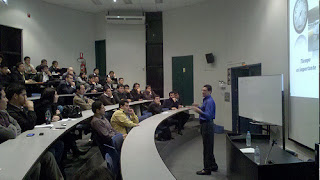May 25-26 was of high-activity at the El Panama hotel, where the 3rd PMI Panama Project Management Congress took place. Panama City is a very active place with a blooming economy. New business buildings are under construction and there are more jobs than people to take them. The boost in the economy is mainly due to the ongoing Panama Canal traffic plus its current expansion and the banking industry.
The congress had around 300 participants attending the congress days and then there was a workshops day on May 27. There were 4 keynotes: on management by Jeff Hodgkinson; on the future of management in Panama by Eduardo Jaén; on the subway project for Panama by Roberto Roy; and on the project management effort to recue the 33 miners trapped in Chile by Hugo Constanzo. All keynotes were worthwhile but I want to give special mention to Constanzo’s for its incredible success regardless the high stakes and low odds it confronted—and Constanzo’s high humanity and humility which shows his quality as a great manager and an exceptional human being.
There were a total of 24 sessions on diverse topics from the very practical to the conceptual, techniques, experiences, government projects, and other. My presentation was on agile and lean as a means to better handle project cycles and implement an evolutionary approach to management.
The three workshops offered where on Authentic leadership for breakthrough results by Hawk Carpenter; A sixth sense for project management by Tres Roeder; and Practical lean-agile and innovation for managers by yours truly. All workshops were successful and I was flattered by the fact that my workshop got the highest attendance and ranking of all. I hope to get the opportunity to give this same workshop at the SFBAC soon.

